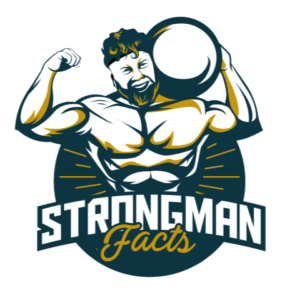How Do Strongman Do Recovery?
Strongman training is a physically demanding sport that requires intense training and recovery methods. Recovery is a crucial aspect of strongman training as it allows the muscles to repair and grow stronger. In this article, we will explore the importance of rest and recovery, proper nutrition, and active recovery methods for strongman athletes.
How Do Strongman Do Recovery?
Rest
Rest is a vital component of muscle recovery for strongman athletes. Adequate rest allows the muscles to repair and grow stronger. Strategies for resting include getting enough sleep, relaxation, and mental recovery. Proper sleep hygiene involves getting at least 7-8 hours of sleep per night and maintaining a consistent sleep schedule.
Relaxation techniques such as meditation, deep breathing, and yoga can help reduce stress levels and promote muscle recovery. Mental recovery involves taking time off from training to prevent burnout and mental fatigue. Balancing rest and active recovery is crucial to prevent muscle atrophy. Active recovery methods such as light exercise, stretching, and foam rolling can help promote blood flow and prevent muscle stiffness.
Food
Nutrition plays a significant role in muscle recovery for strongman athletes. Proper nutrition helps provide the body with the necessary macronutrients and micronutrients to repair and grow muscle tissue. Identifying the right macronutrients and micronutrients for recovery is crucial. Protein is essential for muscle repair and growth, and strongman athletes should consume at least 1 gram of protein per pound of body weight.
Carbohydrates are also crucial for energy replenishment, and athletes should consume complex carbohydrates such as whole grains, fruits, and vegetables. Adequate hydration is also essential for muscle recovery, and athletes should aim to drink at least 8-10 glasses of water per day. Timing of meals is also crucial, and athletes should consume a meal or snack within 30 minutes after training to optimize recovery.
Stretching
Active recovery methods are essential for preventing muscle stiffness and soreness for strongman athletes. Stretching and mobility exercises can help promote blood flow and prevent muscle stiffness. Massage therapy is also an effective method for promoting blood flow and reducing muscle tension. Other active recovery methods such as foam rolling, compression garments, and ice baths can also help promote muscle recovery.
Foam rolling helps to break up adhesions in the muscle tissue and promote blood flow, while compression garments can help reduce muscle soreness and inflammation. Ice baths can also help reduce muscle soreness and inflammation by constricting blood vessels and reducing blood flow to the affected area.
Ice Baths
Ice baths have been shown to have numerous physical benefits for strongman. Firstly, they can reduce inflammation and soreness in muscles, which is particularly useful after strenuous exercise. This is because the cold temperature constricts blood vessels, which helps to reduce swelling and inflammation. Secondly, ice baths can speed up recovery after exercise by increasing blood flow to the muscles. This helps to flush out waste products and deliver essential nutrients to the muscles, which can help to improve muscle strength and endurance.
Ice baths also have psychological benefits, which are often overlooked. Firstly, they can help to reduce stress and anxiety levels. This is because the cold temperature activates the parasympathetic nervous system, which helps to promote relaxation and reduce stress levels. Secondly, ice baths can improve mental clarity and focus, which is particularly useful for athletes who need to stay focused during competitions. Finally, ice baths can enhance mood and promote relaxation, which can help to improve overall well-being.
Final Thoughts
Strongman athletes require effective recovery methods to prevent injury and promote muscle growth. Rest and recovery, proper nutrition, and active recovery methods are essential components of muscle recovery for strongman athletes. By incorporating these methods into their training regimen, athletes can enhance their performance and prevent injury.



